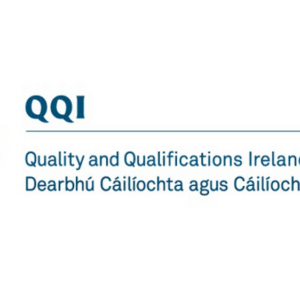The Education Indicators for Ireland 2022 has been published which covers all levels of education starting with early years, working through school education, further and higher education, and through to lifelong learning.
Findings for the Further Education and Training and Higher Education sector include:
- the number of students availing of opportunities for remote learning in higher education have grown to over 14,700 in 2021, up from 9,207 in the year immediately prior to COVID (2018)
- the apprentice population increased from 19,630 in 2020 to 24,212 by end 2021. While craft apprenticeships continue to account for the majority of registrations, broadening apprenticeship opportunities have seen other apprenticeships account for 13 per cent of registrations in the sector
- participants in Skillnet Ireland programmes exceeded 85,000 for the first time, including almost 5,000 unemployed persons
- the total number of post-graduate researchers continues the trend of steady growth, rising from 9,802 in 2016 to 11,755 in 2021, of which 6,382 or 55 per cent were female (PhD and Research Masters, full and part-time)
Minister for Further and Higher Education, Research, Innovation and Science Simon Harris said:
“This report demonstrates the broadening of our education and training offerings to allow learners to engage with, and continue, their education and training journey in a way that suits their individual learning styles and life stages.
“Growth in remote learning in higher education and apprenticeship numbers demonstrate that learners are ready and willing to avail of a range of opportunities to gain their qualification.”
This updated report provides data up to and including the school/academic year 2021-2022 where possible, as well as a look back at how our education system has progressed over the five years 2017-2021.
Among the topics covered in the report are:
- school types
- Leaving Certificate pathways
- special education
- access to higher education
- graduate numbers
- further education and training enrolments
This is the only report where data from across the entirety of the education and training sector is presented together and, in doing so, the report presents a snapshot of the whole education system at a single point in time, while also charting its progress over the past 5 years.
Minister for Education Norma Foley said:
“I welcome the publication of today’s report which presents us with a snapshot of the whole education system and is an invaluable tool in formulating future policy.
“I think it is heartening to see that a number of key indicators are continuing to trend in a positive direction, particularly the pupil-teacher ratio and the retention rates for DEIS students.
“We will continue to work to further address these key areas and ensure that there is progress right across the education sector.”
Findings for Primary and Post-primary Education include:
- the total number of teachers has risen by over 7,800 since 2017, from 64,692 to 72,496. The pupil:teacher ratio at primary level has fallen from 15.3 to 13.7 since 2017, while in post-primary it has fallen from 12.8 to 12.2
- average class sizes at primary level have fallen from 24.5 in 2017 to 22.8 in 2021
- the number of pupils with special educational needs in mainstream primary have risen substantially in recent years, from 5,572 in 2017 to 8,740 in 2021, while the number of special needs assistants (SNAs) has increased from 13,862 in 2017 to 18,050 in 2021
- the percentage of pupils doing Transition Year has risen from 71.9 per cent of pupils in 2017 to 72.9 per cent in 2020, and further increased in 2021 (73.8 per cent)
- the total number of pupils taking the Leaving Certificate established programme (across both 5th and 6th year) has increased from just under 81,000 in 2017 to over 91,000 in 2021
- the retention rate to the Leaving Certificate in DEIS schools stood at 86.1 per cent for the 2015 entry cohort, up from 84.8 per cent on the previous year, while the gap in retention between DEIS and non-DEIS schools fell to 7.6 per cent, down from 8.6 per cent in 2020
The full report is available to read at: https://www.gov.ie/en/publication/055810-education-statistics/












Comments